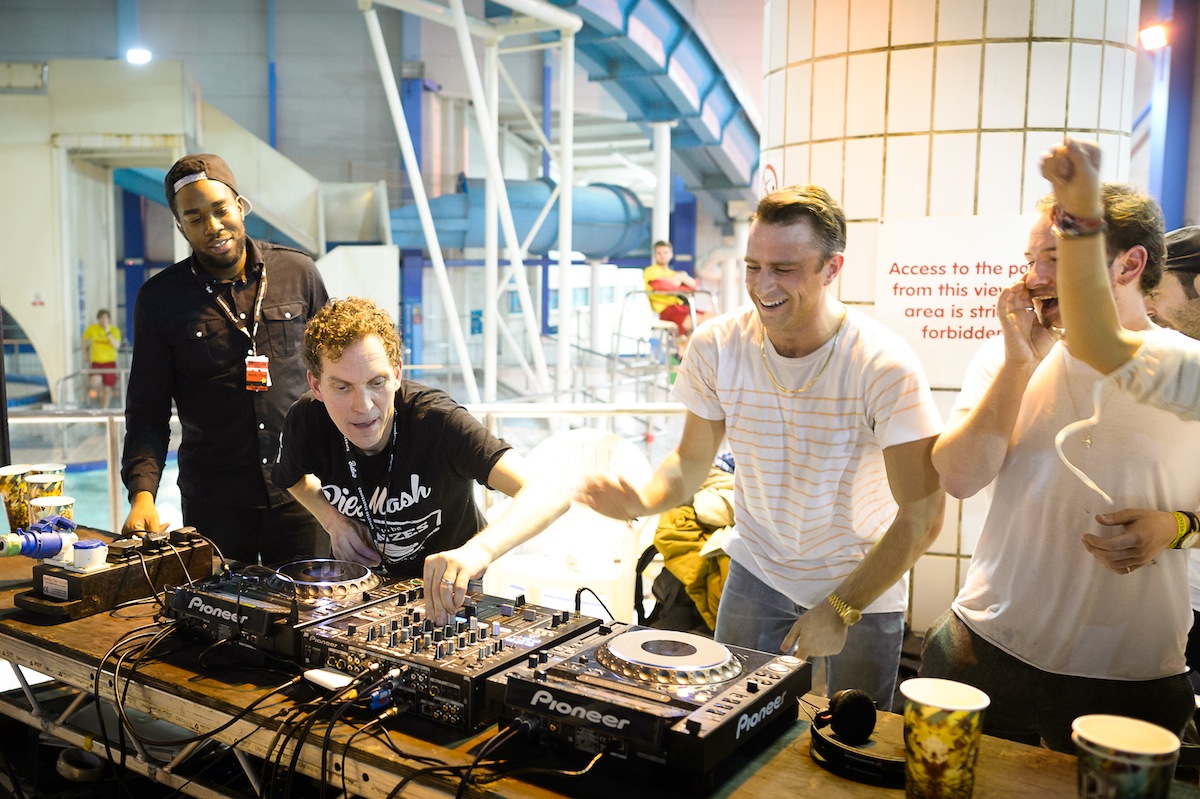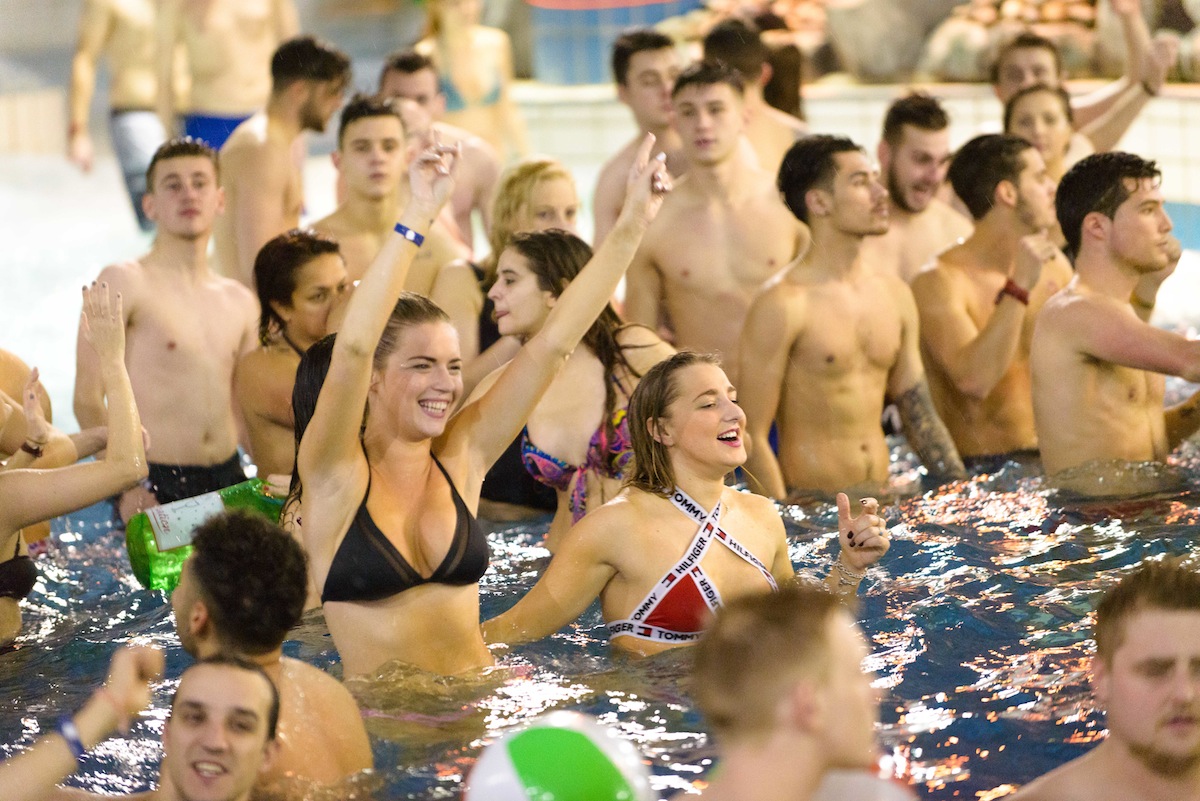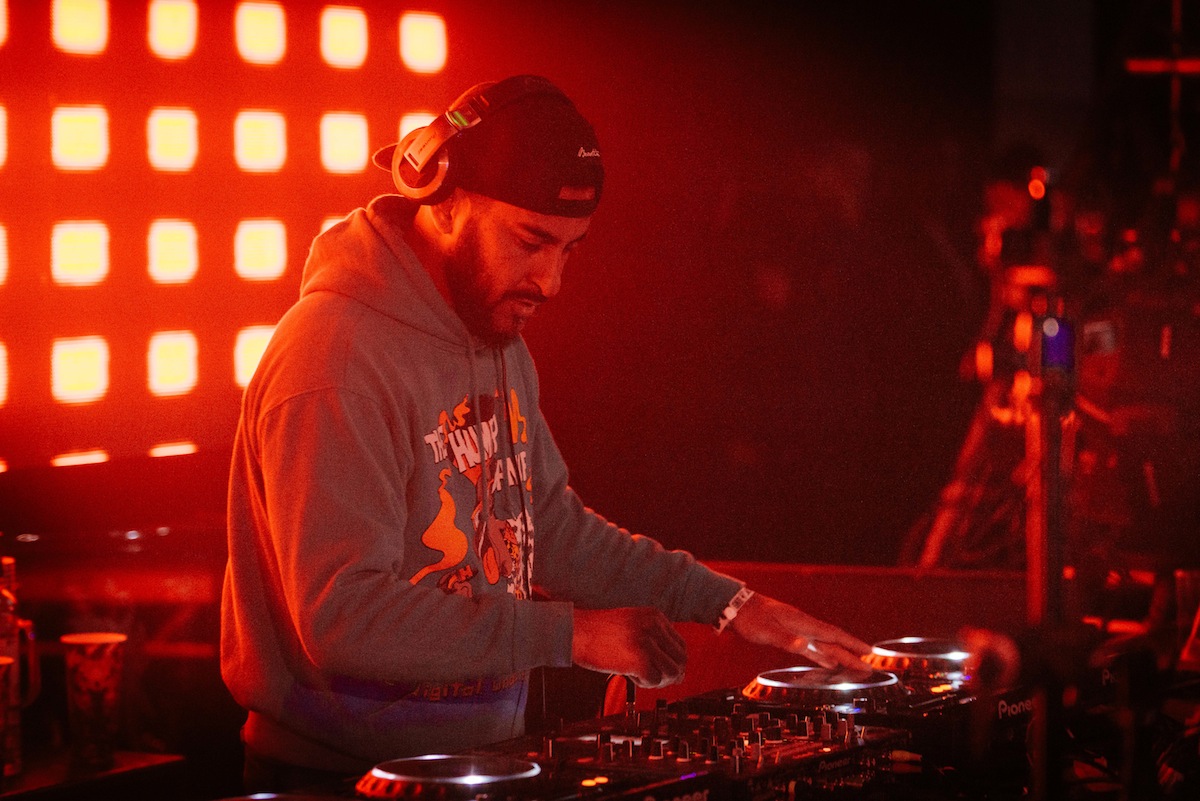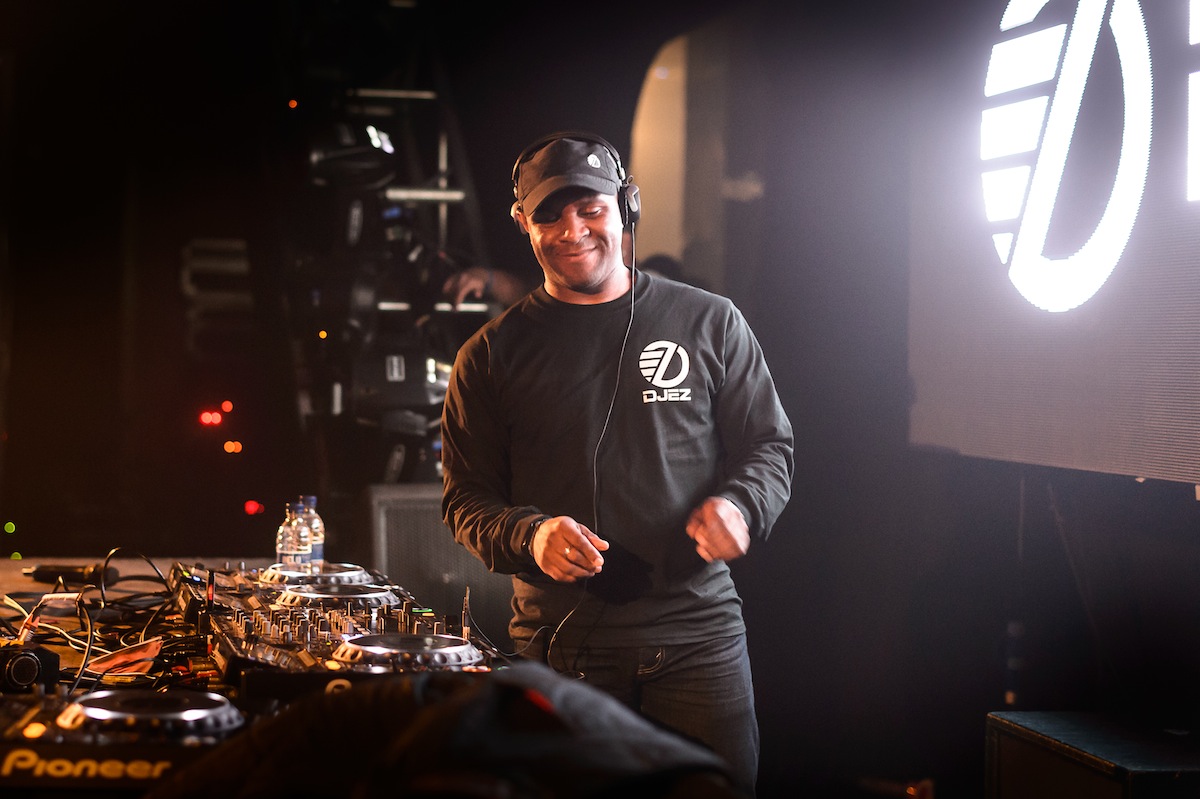Eight Takeaways from the Bugged Out Weekender
Squelched-out acid, '90s house icons and holiday-center dystopia: The Weekender covered plenty of ground.

A couple of weeks ago, XLR8R headed to the south coast of England to attend the infamous Bugged Out Weekender. Taking place at a Butlins holiday resort in the sleepy town of Bognor Regis, the horde of Bugged Out faithfuls reunited for a weekend of dancing and excess. For those wanting to get back on it swiftly after the New Year’s festivities, the Weekender’s been a firm staple in the January calendar for the past five years now.
As a brand, Bugged Out’s a bit of a U.K. institution. Having paved the way for the influential sound of ’90s British dance music since 1994, they’ve managed to stay afloat through some fairly turbulent periods which has seen other promoters fall by the wayside. 2016 residencies at XOYO as well as Brighton’s latest club venture Patterns prove their continuing relevance today.
In recent years, their booking policy has typically catered to more accessible tastes, pushing acts that you’d be likely to see on Radio 1 or at Manchester’s Warehouse Project. For their milestone year they decided to splash out on some rather large acts, including household names to the likes of Armand van Helden, Groove Armada, and DJ EZ. Below are eight impressions that summed up my first ever Bugged Out Weekender experience.
Butlins is the unassuming hedonistic paradise your parents never told you about.
I still have trouble fathoming the idea of holding an electronic dance festival at Butlins—but each time I return to the site, it just feels more right. Without sounding like one of those people, it’s something you need to check out for yourself to really understand the utterly bizarre beauty of the Butlins festival experience.
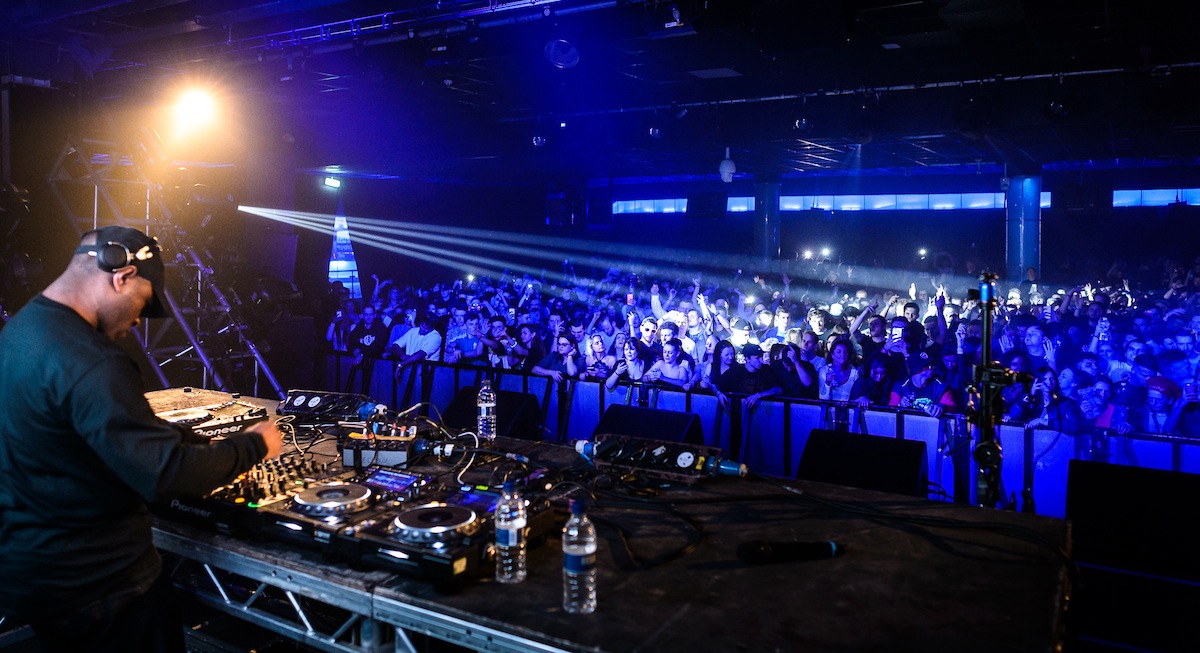
There’s a faintly dystopic atmosphere about the resort. Perhaps it’s the dated décor, or the juxtaposition of family-friendly apartments (complete with submarine bunk-beds) against abandoned beer cans and empty baggies that began to accumulate onsite. The place undoubtedly has character, and its ready-made venues and local amenities (including a 24-hourshop) make it a fully functional venue for such activities.
Usually serving as a bowling alley during normal Butlins holidays, the Escape is actually one of my all-time favorite club venues. Tucked away to the side of the room is the bowling alley itself, while opposite the bar the pay desk and shoe store remain eerily vacant. Its reappropriation as a seedy hide-away is perfect for the nocturnal hedonism that descends onsite. Additionally, what immediately struck me was how good the sound quality was—clear and punchy, despite the swathes of carpeted floor.
But actually, for a more intense, full-on experience, the Reds stage is where you should be at. While the Escape has a slightly brighter ambiance and is more bar-like, Reds is more cavernous, with pillars on the dance floor and lower lighting. Heavy doses of strobe and boomier acoustics gave off a really convincing warehouse vibe.
Age is just a number, and the oldies can still teach a thing or two.
Dance music is perhaps one of the most changeable and challenging areas of music to be working in—dubstep is in one day, and by the next it can be deep house or techno. It’s for this reason, I was pleasantly surprised by how banging Groove Armada’s performance was. Still going at 20 years strong, the pair spun a combination of contemporary big-room tracks and favorites from their own material; their 2014 slow-burner “Hold On” was a great moment, its repetitive sax notes and vocal bringing up hands and cheers.

On the Saturday night Eats Everything warmed up before ’90s icon Armand van Helden took to the spotlight, with the former indulging in some less obvious numbers like Four Tet’s “KHLHI” as well as big hitters including his edit of “Dancing (Again)“. Van Helden, meanwhile, is one of the few people about who you can say that even if you’re not familiar with the name, you’ve almost certainly been acquainted with his music. Responsible for a dizzying number of canonical dance tracks, who else to be schooled in classic ’90s house than the man himself?
He played a good helping of his own stuff, as well as heyday Defected and Strictly Rhythm tunes. Surefire reactions to CLS’s legendary “Can You Feel It” and his own “You Don’t Know Me” had the room ecstatically jumping around in gold confetti.
Ice-cream isn’t ideal in January, but we all scream for Skream.
A little bird had informed me of a secret set from Skream on the Saturday evening, housed in a room through a very nondescript side door by Burger King. Half an hour in and people had caught on, with a nice little crowd milling around a mini DJ booth in the shape of a giant-sized iPod; little plug-in party lights positioned in the corners made the room feel a bit like a school disco, but it somehow worked. They’d got in a small VOID set-up too, so the sound was super sweet. Skream knocked up a pretty flawless set of disco house jams, gently amping things up via K-Hand’s beaut “Remember When” and Masters At Work–type stuff, eventually heading into acid territory with Paranoid London’s “Transmission 5.” The set wasn’t too banging and the transitions seamless —a brilliant start to the evening.

Artwork’s work is always a work of art.
People were already beginning to head back home on the Sunday morning, in time for work on Monday—but a good number of committed ravers had stayed behind to hold fort. I was back in Reds this time, with Artwork doing his last set of the festival.
Artwork’s warm-up set was quite possibly my favorite from the whole weekend—no fireworks or frills, just really solid selections throughout and an acute understanding of the crowd. It was clear from the beginning that despite (or because of) the low numbers in attendance, there was a real intimate connection among the people on the floor and with the DJ—quality, not quantity here. Not long after entering the room, a 40-strong conga line had started to snake around the venue, to Artwork’s great encouragement.
I’d love to give a full tracklist of all of the brilliant tunes Artwork dropped, but for the sake of brevity will just give some highlights. Sister Sledge’s timeless “Lost In Music” had everyone singing along and in a boogie, before the DJ progressed into more synth-oriented selections by Los Hermanos and Todd Terje. His slow build crafted the energy perfectly, pushing and pulling at just the right times, with even a pull-back and rewind at one point. Much of the set was threaded through an Afro-Latin vibe, replete with congas and funk-laden bass-lines. He ended with the dreamy “Want You In My Soul” by Lovebirds—a really beautiful end to what was a spotless set.
Artwork’s Art’s House became an instant fixture for after-hours fun for those who wanted to carry on the party when the main stages had shut. On the Friday night following a fairly techno-centric evening of music, Art’s House was the perfect vibe: nothing but power disco and funk & soul classics. There’s a kind of avuncular feeling about Artwork, and when he’s at the decks you always feel that you’re in safe and capable hands—just what you need to see you through those delicate hours of the morning. The Saturday involved more cuts of power disco, but with added fire: Floorplan’s “We Magnify His Name.” It’s fair to say the place was rocking until at least 9am.
Gerd Janson and Joy Orbison prove to be a formidable force when paired up.
Closing the Reds stage was the act I was perhaps most looking forward to from the first night: Gerd Janson back-to-back with Joy Orbison. Regulars at Berghain and Panorama bar, the pair brought to the table the most dynamic and well-programmed set of the night. While Dusky’s performance was enjoyable, it was a lot more linear and lacked the nuance that Janson and Joy O brought. The two DJs are highly individual personalities when separated, and it was this difference that brought a dynamism and unpredictability to their set. Janson delivered a taste of the heavier P-Bar sound, with lashings of piano riffs and clubby synth motifs; Joy O would lay down more affronting rhythms. Both were obviously very focused and attentive, with Janson frequently checking the crowd. After Laurent Garnier’s ‘”Crispy Bacon,” the set took a left turn to ’90s rave and heads-down techno, with Joy O laying down Planetary Assault Systems’ “Hama Static” and Digital Domain’s 1992 classic “Rabbit City 003.”
Believe the hype—Paranoid London are one of the best things going right now.J
ust off the back of a handful of self-released albums, the London-based duo have garnered an impressive cult following, and at the Weekender, they went straight in with their distinct brand of stripped back, drum-heavy jams. Emanating an urban grittiness, their music has a remarkable appeal, considering how reductive it is. Dirty basslines and saturated hats jolted out of the stacks, while a guy in sunglasses and a cowboy hat howled down a microphone. The whole scene was brilliantly weird, as if a Fear And Loathing-esque parallel universe had just opened up. The live vocals worked really well alongside the guys working the hardware, who were very animated, jerking and jiving to the loops. When you thought the beats couldn’t get any dirtier, the acid any squelchier, they took it a step further. The crowd were clearly loving it, and it’s safe to say that Paranoid London’s set was both one of the most anticipated and memorable sets from the weekend.

A good Bicep workout is always a great way to end a festival
I decided to stay for Bicep to conclude my Bugged Out 2016 experience, and the duo delivered a blistering set, loaded with Bicep edits and large doses of euphoria. The final hours were mostly heads-down fist-pumping business, characterized by very slick mixing and excellent selections. Their set culminated with Filterheadz’s “Sunshine” and their 2015 anthem “Just.” Ignoring the 3:30am curfew, they stormed ahead until half past four in the morning, to the great merriment of a buzzing Reds stage.
Don’t expect any chin-stroking techno—Bugged Out is a weekend of shameless, full-throttle fun.
If you want variety or anything marginally left of field, Bugged Out really isn’t the one. But for peak-time entertainment across the board, you can’t go wrong. The crowd was warm and friendly, and a special mention has to be made for the security and onsite staff, who were exceptional. Sometimes it can be a tiff with security or negative energy from staff that can put a real downer on the party; here, everything ran very smoothly.
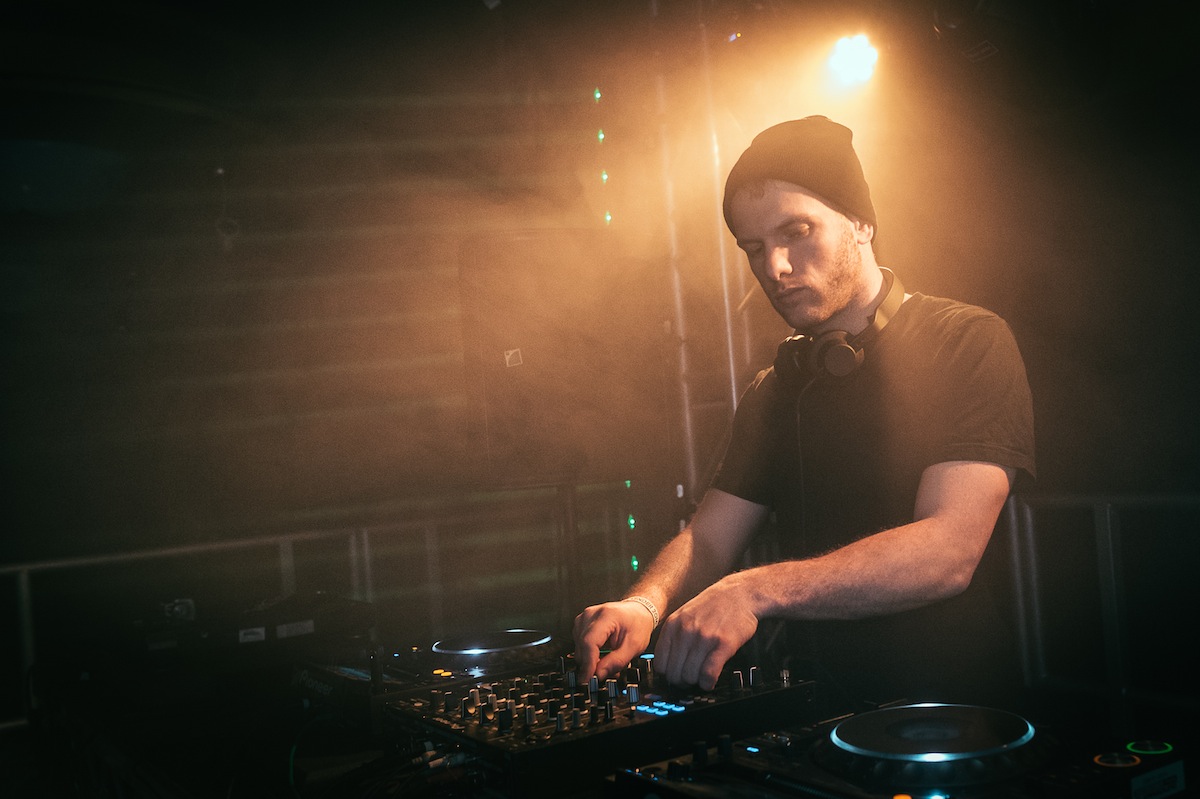
The curation of the lineup certainly had some impressive names on it, but overall resulted in a rather generic sound across all of the venues. Even though you may not find the world’s most groundbreaking selections at the Weekender—what you are guaranteed is a great vibe.
All photos: Tom Horton
